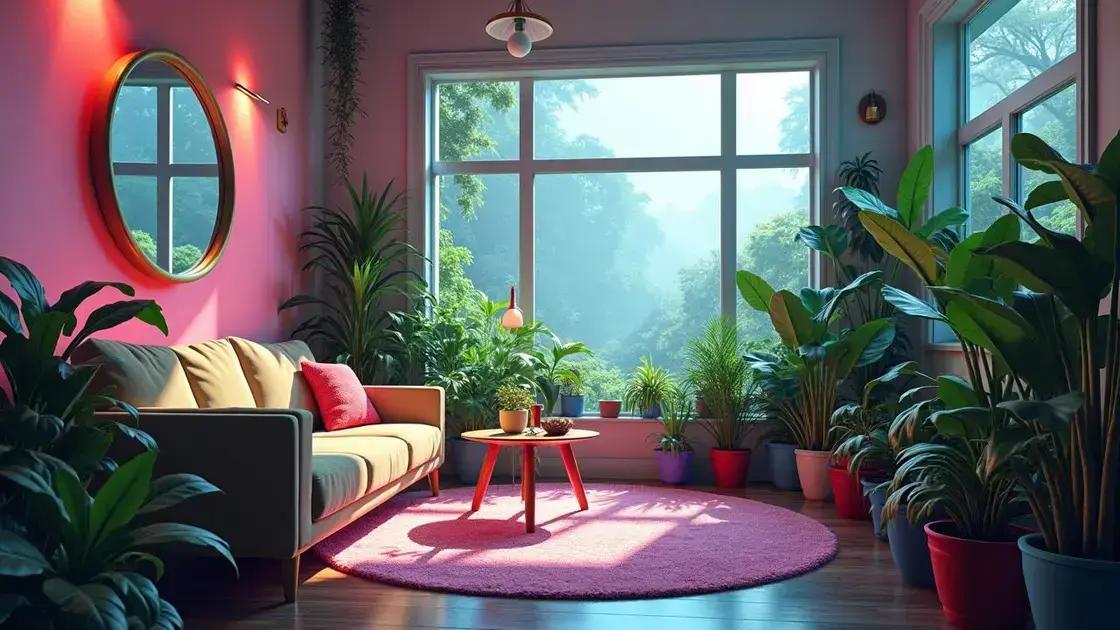How to Care for House Plants: 7 Essential Tips for Thriving Indoor Greens
How to care for house plants is a question many plant lovers ask. The journey of nurturing green companions begins with understanding their needs. If you’re ready to delve into the world of indoor gardening, you’ll discover how to keep your plants healthy and vibrant. From optimal light conditions to recognizing the signs of pests, each section will equip you with the knowledge for successful plant care.
Table of Contents
ToggleEssential tips for indoor gardening success
How to care for house plants effectively begins with understanding essential tips for indoor gardening success. Creating a thriving indoor environment for your plants involves several key practices. Below, we explore several practical strategies that will help your houseplants flourish.
Understanding plant needs
- Identify the types of plants you have.
- Research specific care requirements for those plants.
- Note their preferred sunlight, humidity, and watering conditions.
Watering schedules for indoor plants
- Assess the moisture level in the soil.
- Water when the top inch of soil is dry.
- Use room temperature water to avoid shocking the roots.
Light requirements for houseplants
- Place plants in spots where they receive adequate natural light.
- Consider using grow lights during winter months.
How to fertilize indoor plants
| Fertilizer Type | Frequency | Best For |
|---|---|---|
| Liquid fertilizer | Every 2-4 weeks | Regular houseplants |
| Slow-release pellets | Every 3-4 months | Low-maintenance plants |
Common houseplant pests and solutions
Keep an eye out for pests like spider mites or aphids. Exploring indoor gardening techniques can help you learn natural remedies and preventive measures.
Incorporating these essential tips into your indoor gardening routine will not only ensure your plants thrive but also enhance your living space. Remember, successful plant care is a continuous learning journey!
Understanding light and watering requirements

How to care for house plants involves understanding their light and watering requirements, which are crucial for ensuring their health and growth. Each plant species has its unique needs, making it essential to familiarize yourself with these preferences for successful indoor gardening.
Light requirements for house plants
- Low light plants: Suitable for areas with minimal indirect sunlight. Examples include ZZ plants and snake plants.
- Medium light plants: Thrive in bright, indirect light. Consider pothos and peace lilies.
- High light plants: Require direct sunlight for several hours a day. Succulents and cacti fit this category.
How to assess light conditions
- Observe the amount of natural light available throughout the day.
- Assess plant placement for optimal light exposure.
- Utilize grow lights if necessary, especially in darker months.
Watering needs based on light exposure
Understanding the relationship between light and watering is vital:
- Plants in bright light may need more frequent watering.
- In low light, overwatering can lead to root rot.
- Adjust your watering schedule according to the season.
How to create a watering schedule
| Plant Type | Light Conditions | Watering Frequency |
|---|---|---|
| Succulents | Bright direct light | Every 2-3 weeks |
| Pothos | Medium indirect light | Once a week |
| Snake plant | Low light | Every 2-4 weeks |
For further details, you can learn more about exploring indoor gardening techniques to understand how different conditions affect plant care. By paying close attention to both light and watering requirements, you can create a thriving indoor garden.
Common pests and how to control them
How to care for house plants includes knowing about common pests and how to control them. Pests can cause significant damage to your plants if not addressed promptly. Understanding these common threats and implementing effective control strategies is essential for maintaining a healthy indoor garden.
Identifying common houseplant pests
- Aphids: Small, green or black insects that cluster on new growth.
- Spider mites: Tiny, spider-like creatures that weave webs on the undersides of leaves.
- Mealybugs: White, cotton-like pests that can be found in leaf joints.
- Scale insects: Hard, shell-like bugs that attach to stems and leaves.
Effective strategies for pest control
- Inspect plants regularly for signs of infestations.
- Remove affected leaves or stems to minimize pest spread.
- Use insecticidal soap or neem oil as a natural remedy.
- Introduce beneficial insects, such as ladybugs, to combat pests.
Preventive measures to keep pests at bay
- Maintain healthy plants through proper watering and fertilization.
- Keep your indoor gardening environment clean and free of debris.
- Quarantine new plants before introducing them to your collection.
Monitoring pest control efforts
| Pest Type | Control Method | Effectiveness |
|---|---|---|
| Aphids | Insecticidal soap or neem oil | High |
| Spider mites | Water spray and humidity increase | Medium |
| Mealybugs | Cotton swab with alcohol | High |
If you’re looking for more resources, consider exploring indoor gardening techniques to manage pests effectively. By being vigilant and applying these pest control methods, you can ensure your houseplants remain vibrant and healthy.
In conclusion
Caring for house plants is a rewarding journey that requires attention to various factors, including light and watering requirements, pest control, and overall houseplant maintenance. By implementing the essential tips we’ve discussed, you can ensure your indoor garden thrives and brings joy to your living space. For additional guidance, be sure to check out tips on enhancing your indoor garden. Happy gardening!

